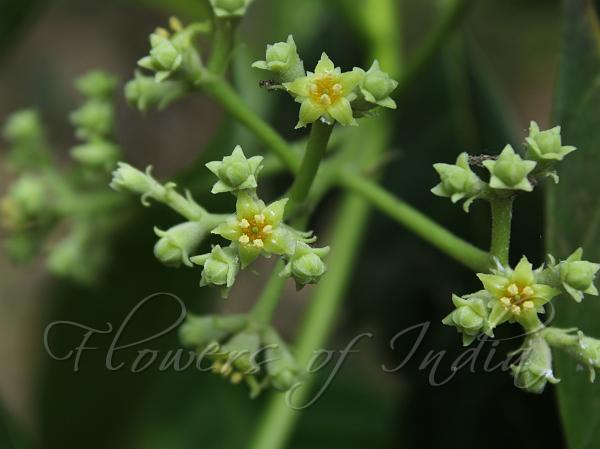|
| Malabar Gum Tree |
|

|

| File size | 414289 |
| Original date | 2/27/22 1:16 PM |
| Resolution | 2048 x 1536 |
| Flash | Flash did not fire, auto |
| Focal length | 55.0mm |
| Exposure time | 1/125s |
| Aperture | 7.1 |
| Focus Distance | |
| Metering Mode | Center weighted average |
| Camera make | Canon |
| Camera model | Canon EOS 1500D |
| Sensor type |
|
|
|
|
Photo: |
Botanical name: Mastixia arborea Family: Cornaceae (Dogwood family)
Synonyms: Bursinopetalum arboreum
Synonyms: Bursinopetalum arboreum
Malabar Gum Tree is a tree up to 25 m tall, bark pale
brown, mottled with dark brown; outer bark 2-3 mm thick, shallowly
fissured with white blotches outside. Tree yields resinous gum that has
camphory smell. The genus name Mastixia is probably in allusion to
Mastic (Greek: Μαστίχα), a resin obtained from a certain tree.
Leaves are simple, alternate, leaf-stalk 1-3 cm,
slender, rusty-hairy when young; blade 6-19 x 2-8 cm, elliptic,
elliptic-oblong, elliptic-obovate or obovate, base narrowed or
wedge-shaped, tip tapering, margin entire, hairless, leathery; lateral
nerves 4-10 pairs. Flowers are bisexual, yellowish-green, in branch-end
corymb-like rusty woolly panicles. Lower bracts lanceshaped, upto 5 mm,
thick, nearly hairless; bracteoles 2. Sepal-tube is bell-shaped,
velvet-hairy, sepals 5, spreading, disc yellow, fleshy, shining, 4-5
lobed. Petals are 5, ovate, fleshy, with an apical notched but without
median ridge, valvate; stamens 5, outside the disc, erect. Fruit is a
drupe, cylindric-ovoid, about 3 cm long, smooth, greenish-purple,
persistent disc and sepals prominent. Malabar Gum Tree is native to
Western Ghats and Sri Lanka.
| Identification credit: Viplav Gangar | Photographed in Ernakulam District, Kerala. |
• Is this flower misidentified? If yes,